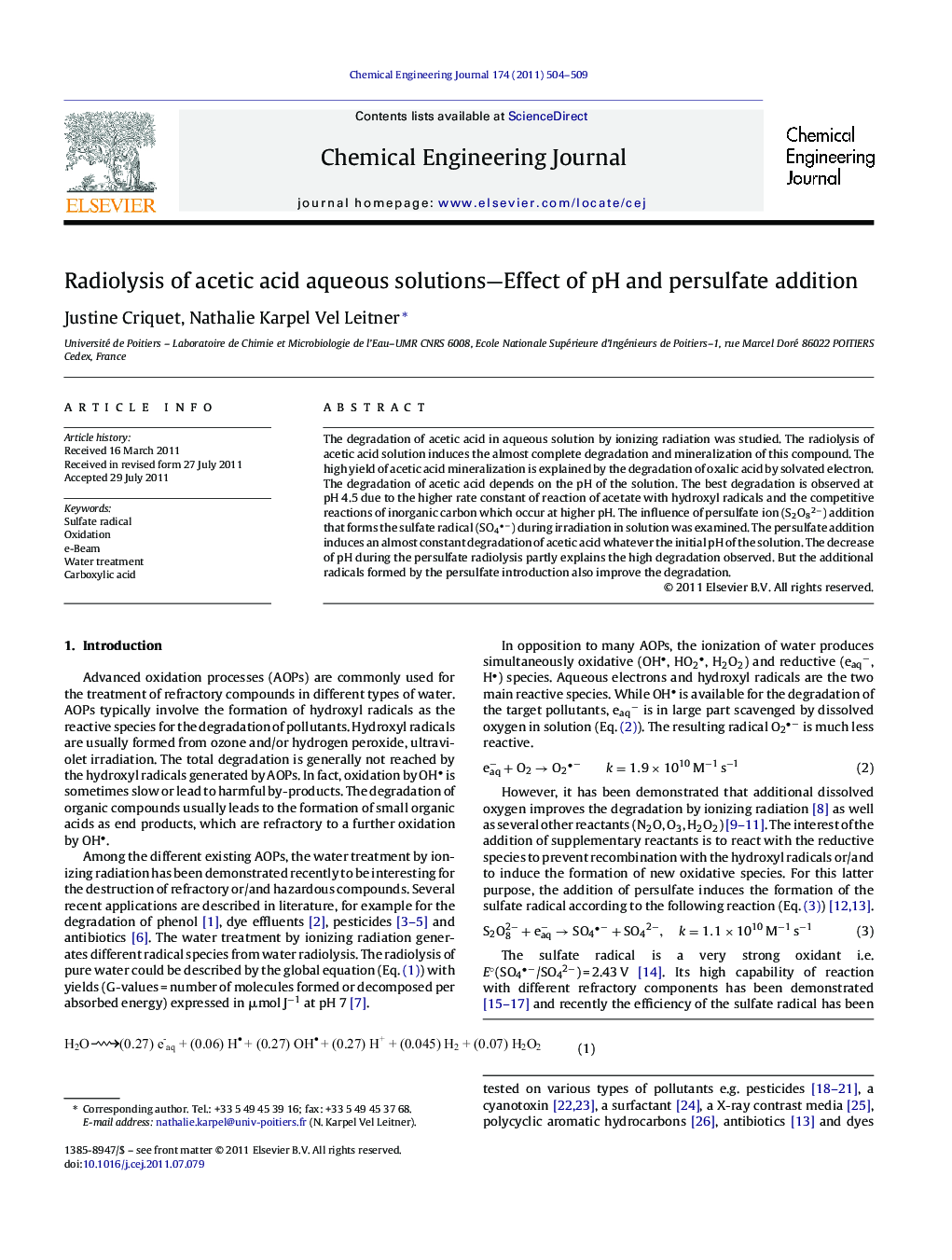| Article ID | Journal | Published Year | Pages | File Type |
|---|---|---|---|---|
| 151091 | Chemical Engineering Journal | 2011 | 6 Pages |
The degradation of acetic acid in aqueous solution by ionizing radiation was studied. The radiolysis of acetic acid solution induces the almost complete degradation and mineralization of this compound. The high yield of acetic acid mineralization is explained by the degradation of oxalic acid by solvated electron. The degradation of acetic acid depends on the pH of the solution. The best degradation is observed at pH 4.5 due to the higher rate constant of reaction of acetate with hydroxyl radicals and the competitive reactions of inorganic carbon which occur at higher pH. The influence of persulfate ion (S2O82−) addition that forms the sulfate radical (SO4−) during irradiation in solution was examined. The persulfate addition induces an almost constant degradation of acetic acid whatever the initial pH of the solution. The decrease of pH during the persulfate radiolysis partly explains the high degradation observed. But the additional radicals formed by the persulfate introduction also improve the degradation.
► The sulfate radical was generated from the e-beam irradiation of aqueous solutions containing persulfate ions. ► The role of this highly reactive radical was demonstrated from the oxidation of acetic acid. ► The influence of pH was studied in absence and in presence of the sulfate radical. ► In acidic conditions the sulfate radical favored the oxidation and the mineralization of acetic acid. ► Results include a kinetic approach.
